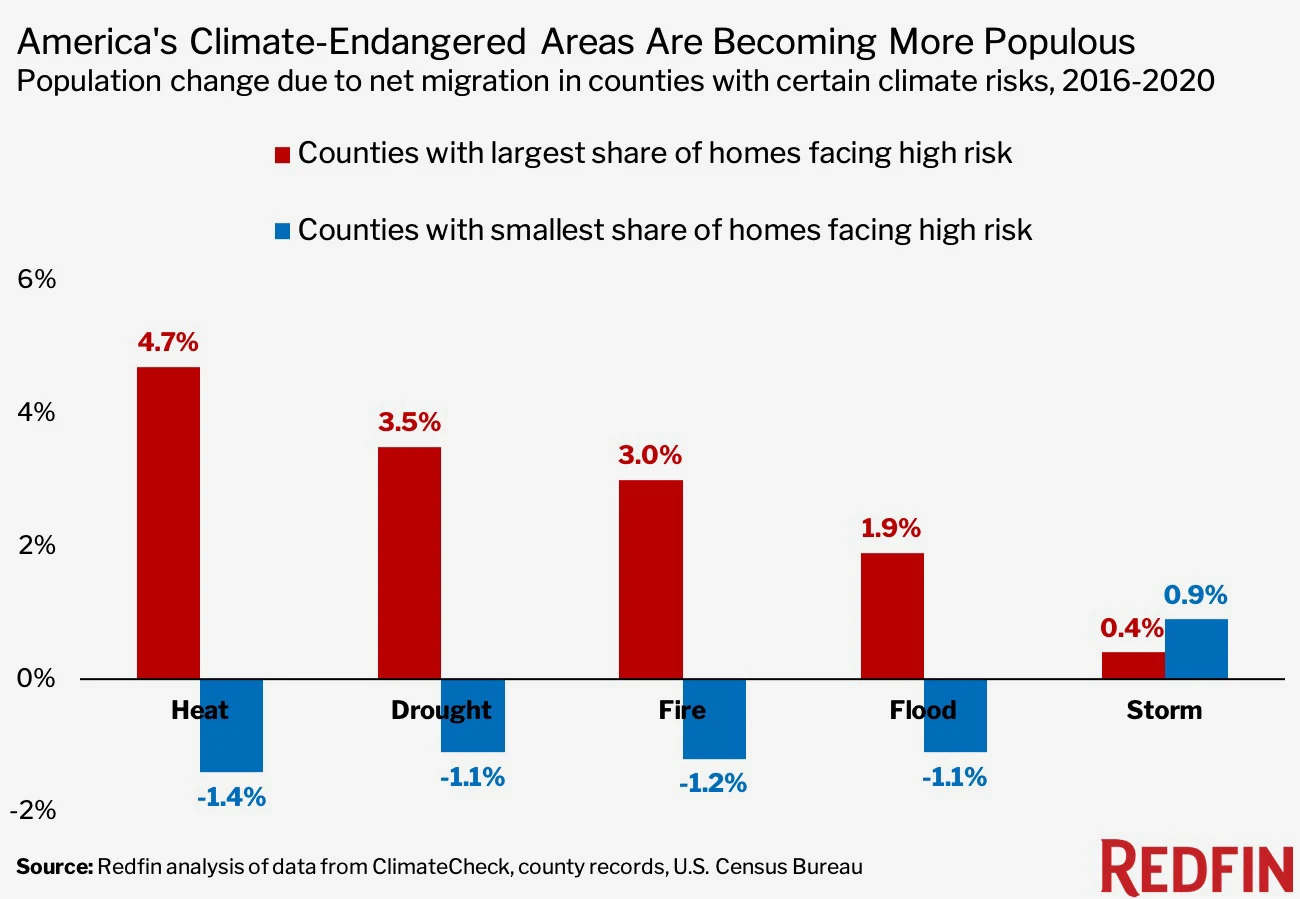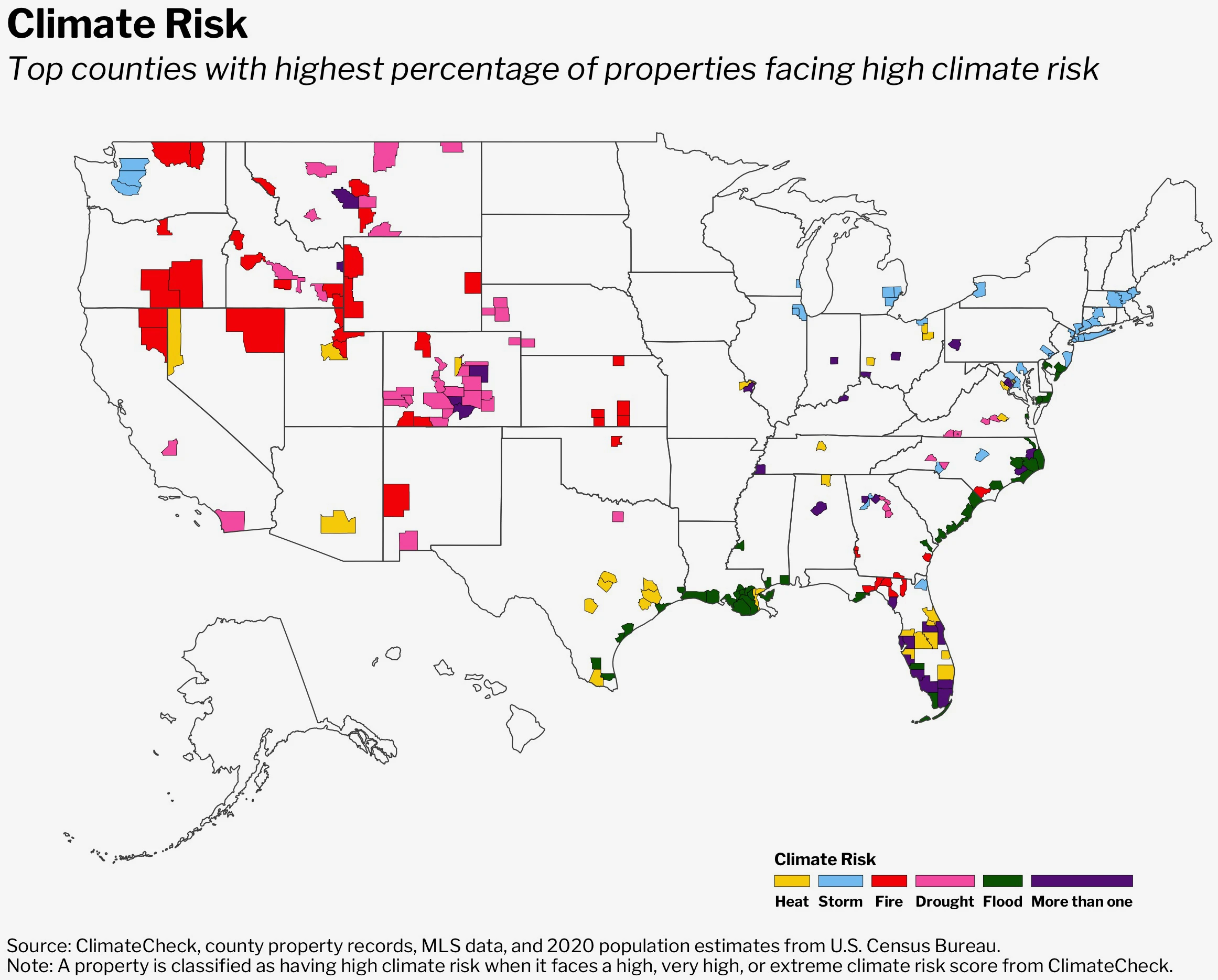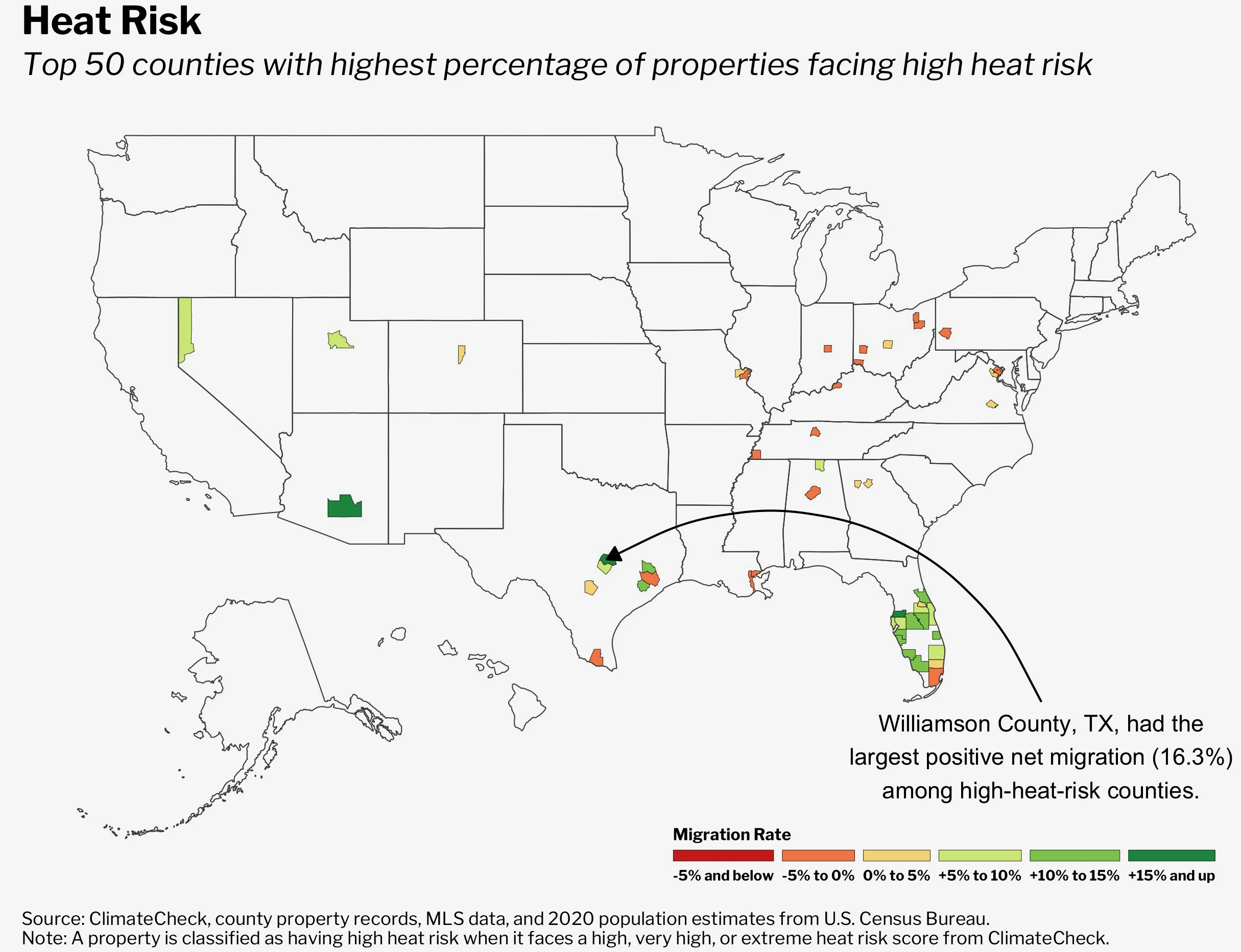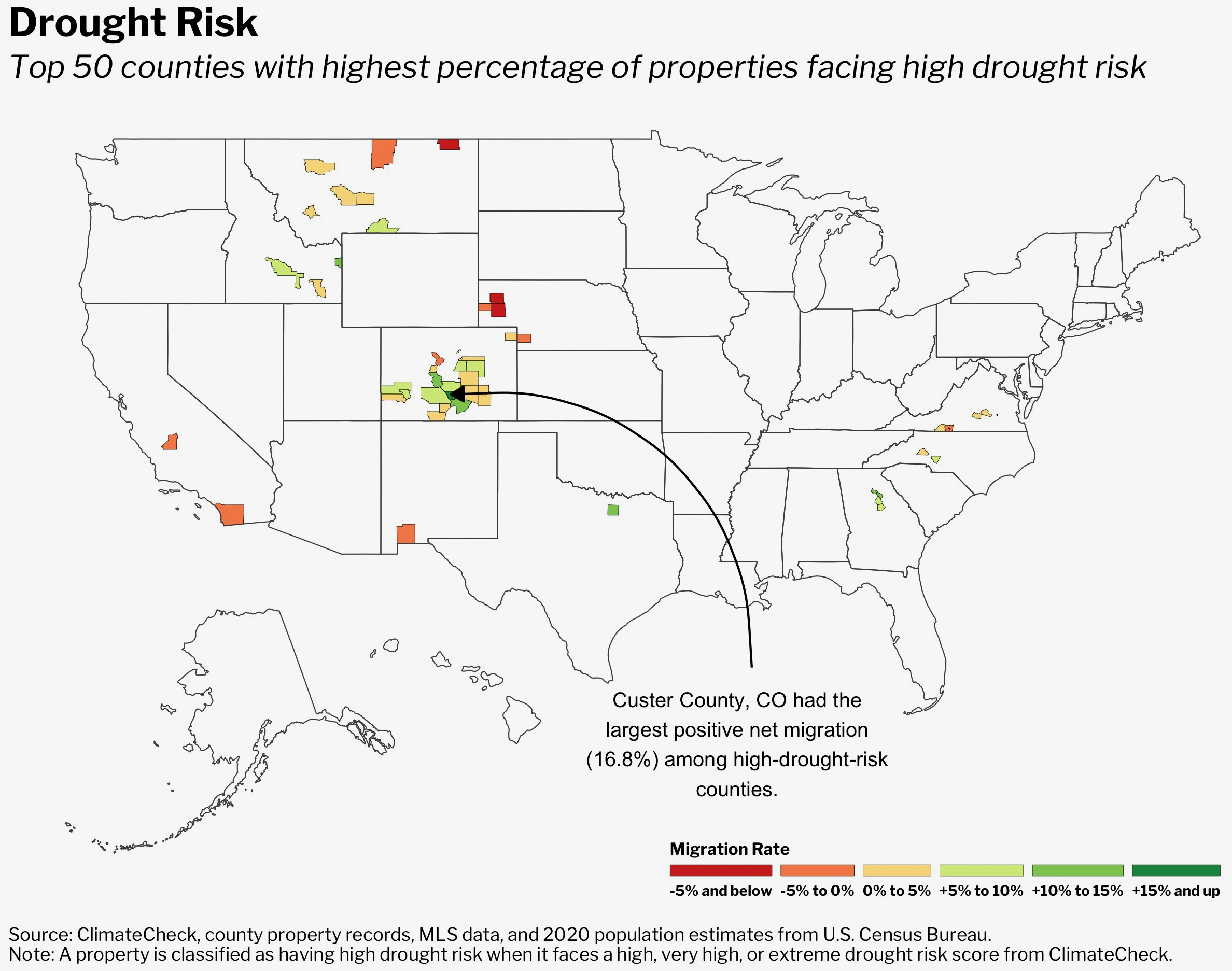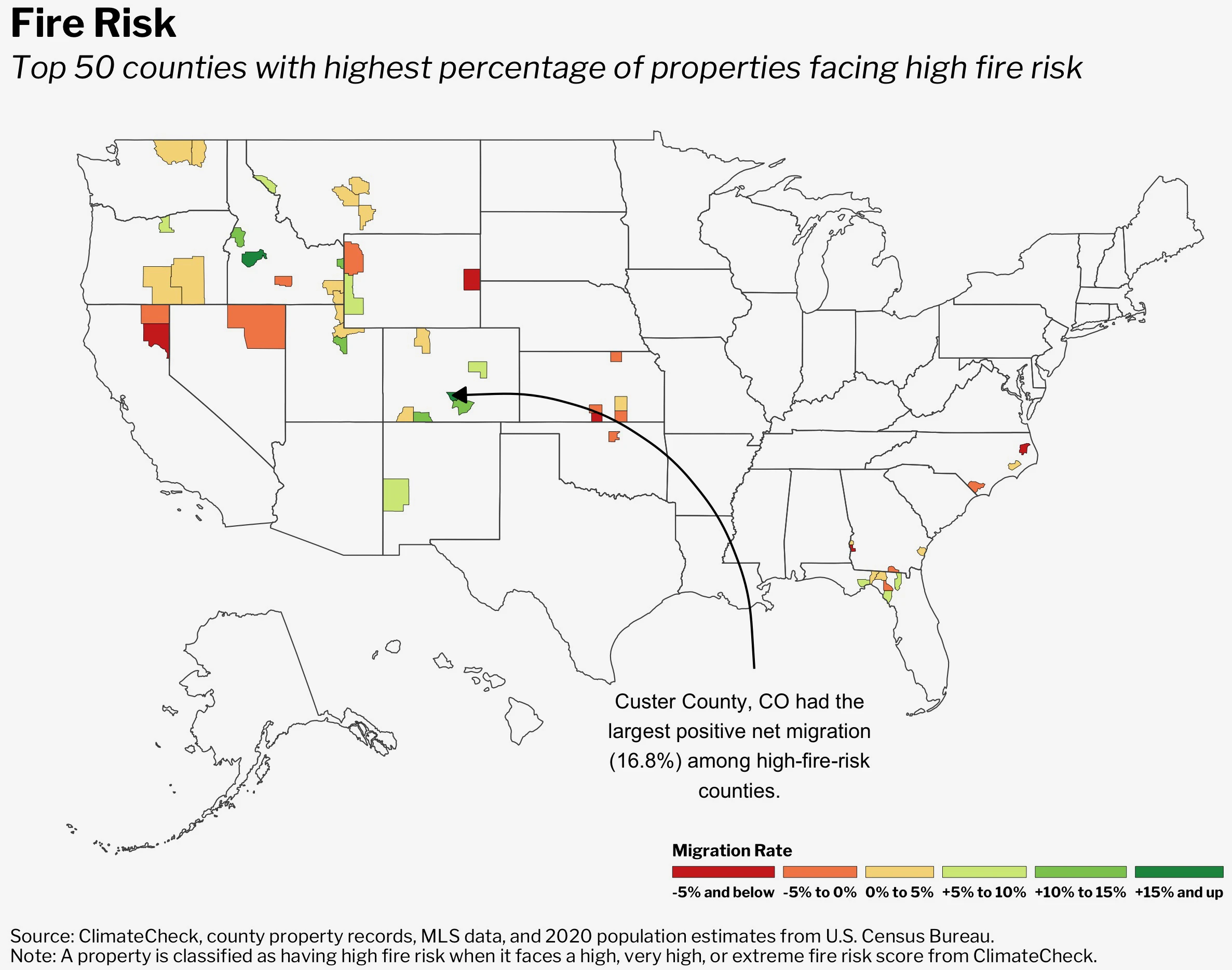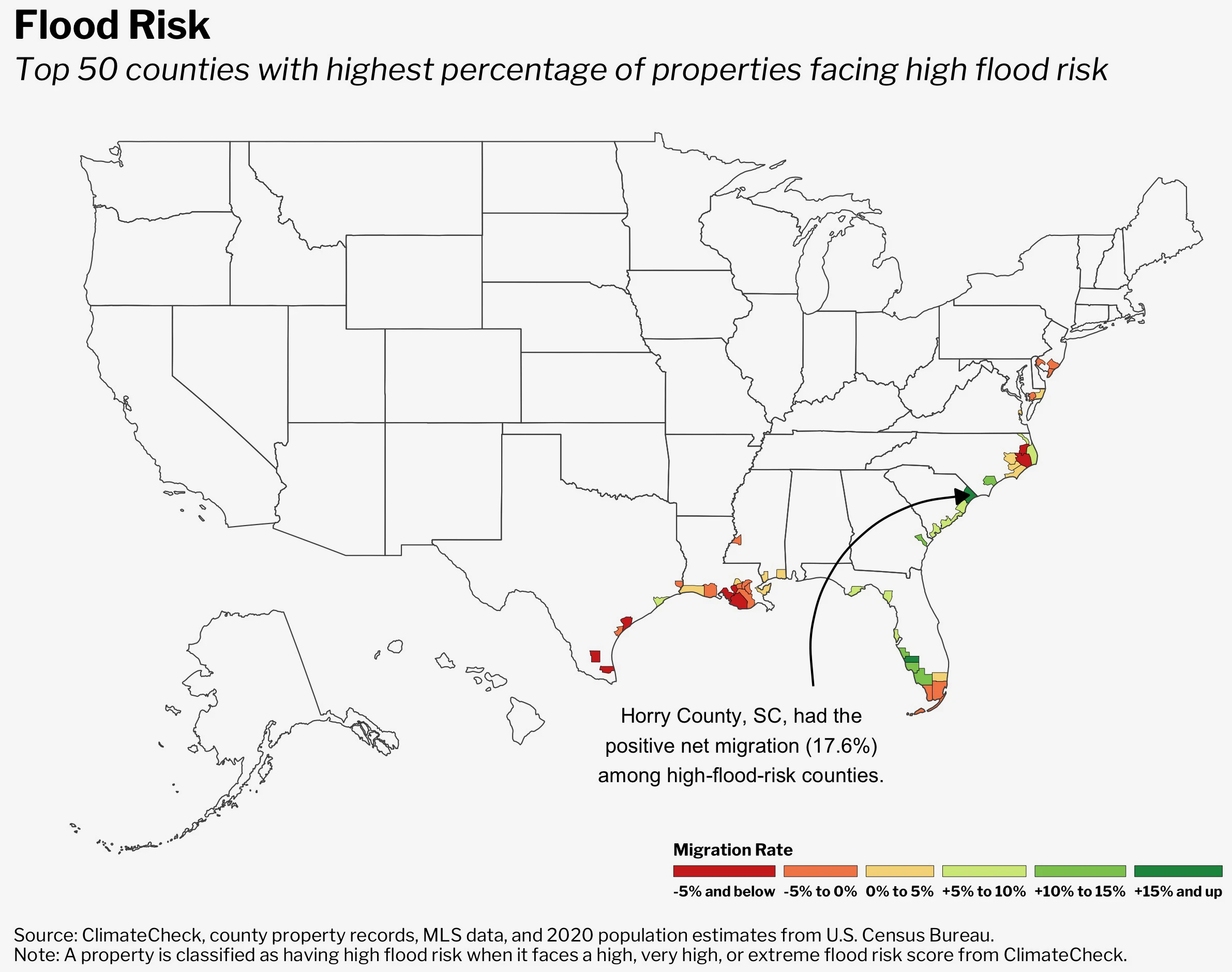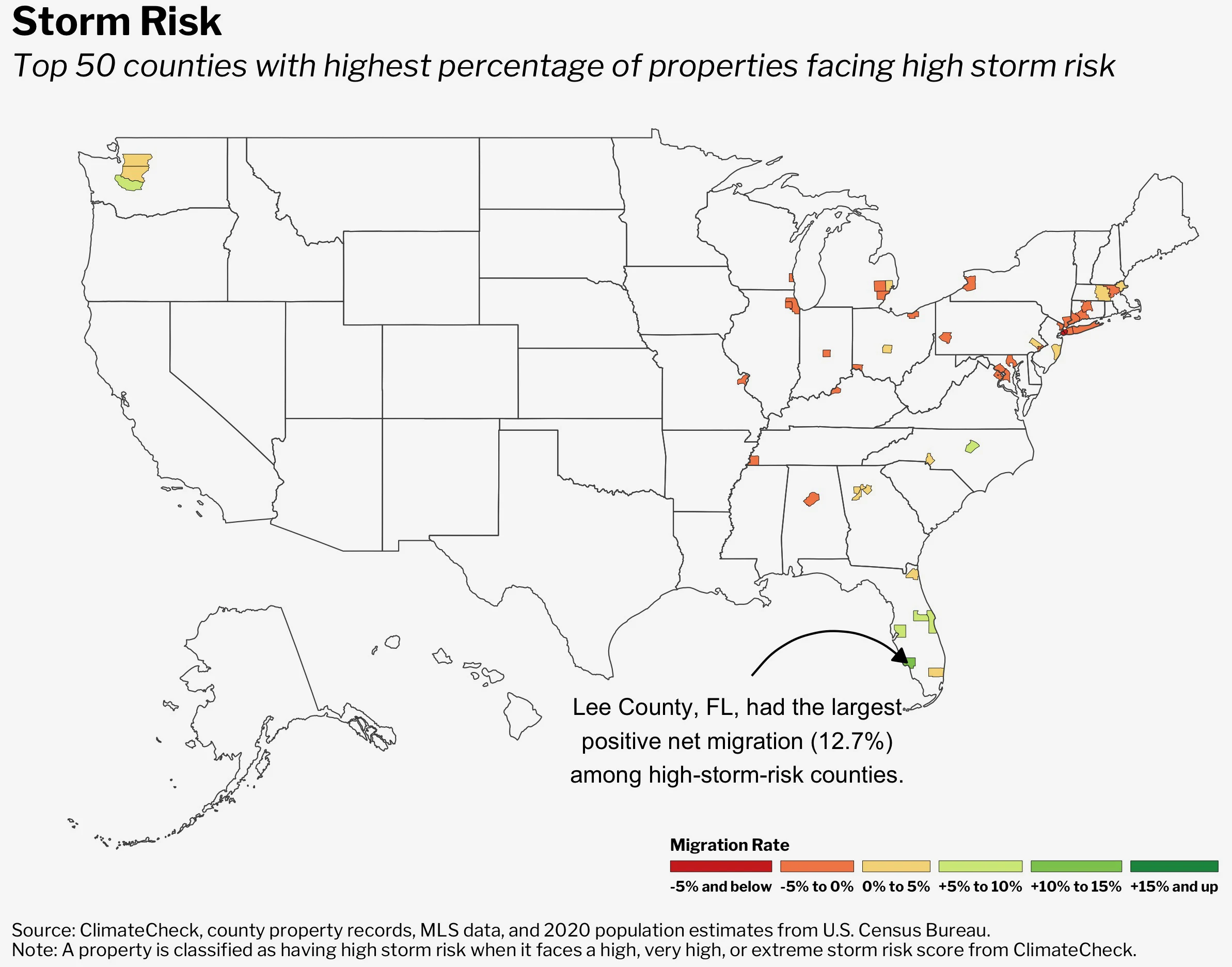There isn’t anywhere you can choose to move to completely avoid climate change. But some places are inherently at higher risk of fires, floods, drought, extreme heat, storms, or a combination of all of the above. And over the past five years—as the U.S. has experienced no fewer than 81 different billion-dollar-plus disasters—a new report from the real estate website Redfin finds that more Americans have been moving to places at higher risk.
The 50 counties at the greatest risk for high heat, for example, saw their populations grow 4.7% between 2016 and 2020. (Of that group of 50, Williamson County, Texas, showed the biggest jump in population, growing 16.3%.) At the same time, the counties with the lowest risk of extreme heat actually lost residents. The cost of housing is likely one factor: In 40 of the 50 counties most at risk for extreme heat, home sales in 2020 were lower than the national median price of $315,000.
Populations also grew in the 50 counties with the biggest share of homes facing drought, fire, flood, and storm risk. In counties where residents face the lowest risk of experiencing drought, fires, and flooding, populations shrank. The only exception to the trend were counties at low risk from storms, where populations grew by 0.9%.
That’s not to say that some people aren’t already deciding to relocate because of repeated hurricanes, wildfires, or other disasters that are more frequent and more intense because of climate change. And that might become more common. In a survey of 2,000 U.S. residents earlier this year, Redfin found that nearly half of respondents who planned to move in the next year said that disasters or extreme temperatures were a factor in their decisions. Three-quarters said that they were hesitant to buy homes in areas with climate risk.
But the potential of suffering a disaster is still outweighed by cost. “We think homebuyers are generally aware of climate risk, but we also think it’s not the top concern for the majority of them. For most people, the top concern is affordability,” says Daryl Fairweather, chief economist at Redfin. “And the reality is that a lot of places facing higher risk for climate change are in the South and other parts of the country where the cost of living is more affordable.”
Recognize your brand’s excellence by applying to this year’s Brands That Matter Awards before the early-rate deadline, May 3.

